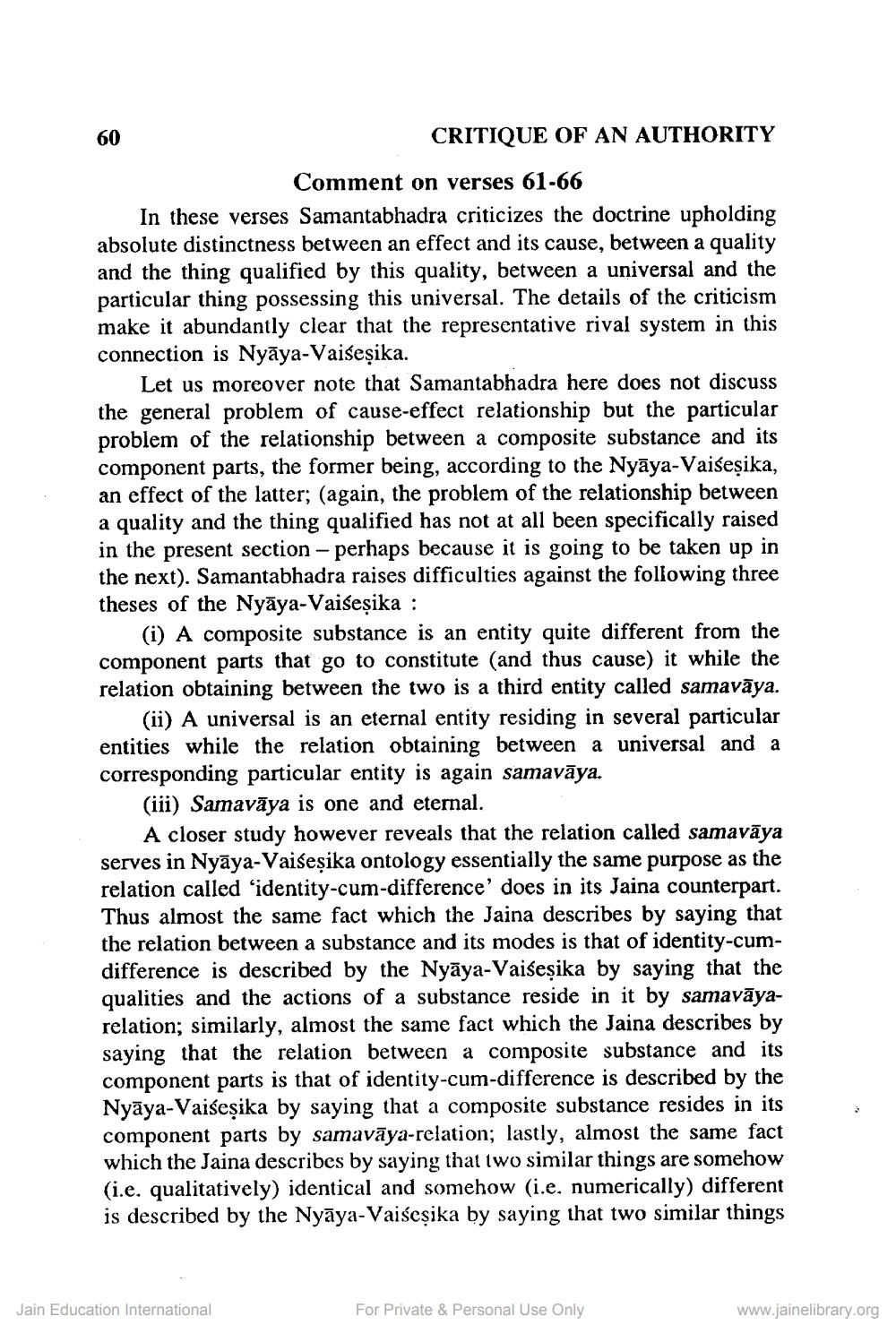________________
60
CRITIQUE OF AN AUTHORITY
Comment on verses 61-66
In these verses Samantabhadra criticizes the doctrine upholding absolute distinctness between an effect and its cause, between a quality and the thing qualified by this quality, between a universal and the particular thing possessing this universal. The details of the criticism make it abundantly clear that the representative rival system in this connection is Nyāya-Vaiseṣika.
Let us moreover note that Samantabhadra here does not discuss the general problem of cause-effect relationship but the particular problem of the relationship between a composite substance and its component parts, the former being, according to the Nyaya-Vaiseṣika, an effect of the latter; (again, the problem of the relationship between a quality and the thing qualified has not at all been specifically raised in the present section - perhaps because it is going to be taken up in the next). Samantabhadra raises difficulties against the following three theses of the Nyaya-Vaiseṣika :
(i) A composite substance is an entity quite different from the component parts that go to constitute (and thus cause) it while the relation obtaining between the two is a third entity called samavāya.
(ii) A universal is an eternal entity residing in several particular entities while the relation obtaining between a universal and a corresponding particular entity is again samavāya.
(iii) Samavāya is one and eternal.
A closer study however reveals that the relation called samavāya serves in Nyaya-Vaiseṣika ontology essentially the same purpose as the relation called 'identity-cum-difference' does in its Jaina counterpart. Thus almost the same fact which the Jaina describes by saying that the relation between a substance and its modes is that of identity-cumdifference is described by the Nyāya-Vaiseṣika by saying that the qualities and the actions of a substance reside in it by samavāyarelation; similarly, almost the same fact which the Jaina describes by saying that the relation between a composite substance and its component parts is that of identity-cum-difference is described by the Nyaya-Vaiseṣika by saying that a composite substance resides in its component parts by samavaya-relation; lastly, almost the same fact which the Jaina describes by saying that two similar things are somehow (i.e. qualitatively) identical and somehow (i.e. numerically) different is described by the Nyaya-Vaiścṣika by saying that two similar things
Jain Education International
For Private & Personal Use Only
www.jainelibrary.org




